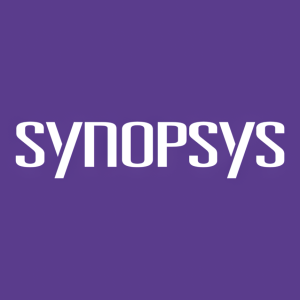Synopsys Introduces the Industry's First Unified Electronic and Photonic Design Platform
Synopsys has launched OptoCompiler, the first unified platform for photonic integrated circuit (PIC) design that merges electronic and photonic design methods. It enables faster, flexible design processes and supports electronic-photonic co-design. Key features include hierarchical design capabilities, accurate simulations, and usability enhancements. The platform aims to reduce design times significantly, as evidenced by Inphi Corporation's experience, which saw a nearly 4X reduction in layout time. Synopsys continues to invest in photonic solutions to address industry demands.
- None.
- None.
Insights
Analyzing...
MOUNTAIN VIEW, Calif., Sept. 9, 2020 /PRNewswire/ --
Highlights:
- OptoCompiler combines specific capabilities for photonic design with industry-proven electronic design methods in a unique, unified platform to make photonic IC design accessible, fast, and flexible
- Supports electronic-photonic co-design to ensure scalable design processes
- Provides comprehensive features for hierarchical design to enable design teams to collaborate and accelerate product development
Synopsys, Inc. (Nasdaq: SNPS) today introduced its OptoCompiler™ solution for photonic integrated circuit (PIC) design, layout implementation and verification. OptoCompiler is the industry's first unified electronic and photonic design platform, combining mature and dedicated photonic technology with Synopsys' industry-proven electronic design tools and methods to enable engineers to produce and verify complex PIC designs quickly and accurately. By providing schematic-driven layout and advanced photonic layout synthesis in a single platform, OptoCompiler bridges the gap between photonic experts and IC designers to make photonic design accessible, fast, and flexible.
"With the Synopsys platform, we were able to reduce the time from schematic entry to final test chip layout by nearly 4X over legacy tools," said Dr. Radha Nagarajan, CTO and SVP, Platforms at Inphi Corporation. "Due to its productivity features and ease of use, we have successfully used OptoCompiler for multiple? tape-outs."
Photonic technologies are enabling innovations in data communications, sensing, and imaging. As demand increases for lightning-fast, energy-efficient communications, integrated photonics provides a key enabling element of the solution. However, widespread implementation of PICs has, until now, been impeded because many design tools were intended for electronics rather than photonics. As a result, photonic design has largely been the domain of experts who could build their own tools or repurpose a disparate toolset.
"With OptoCompiler, we aim to make photonic design as productive as digital," said Tom Walker, group director of Synopsys' Photonic Solutions. "By providing all required functionality in a single platform from a single vendor and integrated in a familiar, proven EDA environment, we are removing the barriers between photonic specialists and IC designers. Our customers benefit by being able to define, simulate, lay out and verify PICs in a fast, cohesive and efficient way."
OptoCompiler combines unique capabilities for photonic design with industry-proven EDA capabilities, including:
- Support for electronic-photonic co-design to ensure scalable design processes
- Comprehensive features for hierarchical design to enable multiple designers to work closely together to shorten product development cycle times
- Ability to use dedicated native photonic simulators – in conjunction with industry-standard electrical simulators – for accurate simulation results that account for statistical variations
- Seamless design and simulation of custom photonic components for inclusion in design alongside process design kit (PDK) components
- Ease-of-use features such as native optical port and net support, assisted waveguide routing, auto-alignment of photonic circuits, and curvilinear layout synthesis
- Enabling industry standards: Python, TcL and OptoDesigner for scripting and iPDK technology to support PDK development
"OptoCompiler is backed by the industry's largest photonic development and support team, with extensive experience designing photonic hardware and software and supporting more than 1,500 successful tape-outs," said Siva Yerramilli, corporate vice president of Strategic Programs in the Silicon Engineering Group at Synopsys. "Synopsys continues to invest in solutions to meet current and future industry needs. Our unique platform will help accelerate PIC development -- from concept to manufacturing."
For more information, visit www.synopsys.com/photonic-solutions/optocompiler.html.
About Synopsys
Synopsys, Inc. (Nasdaq: SNPS) is the Silicon to Software™ partner for innovative companies developing the electronic products and software applications we rely on every day. As the world's 15th largest software company, Synopsys has a long history of being a global leader in electronic design automation (EDA) and semiconductor IP and is also growing its leadership in software security and quality solutions. Whether you're a system-on-chip (SoC) designer creating advanced semiconductors, or a software developer writing applications that require the highest security and quality, Synopsys has the solutions needed to deliver innovative, high-quality, secure products. Learn more at www.synopsys.com.
Editorial Contact:
Simone Souza
Synopsys, Inc.
650-584-6454
simone@synopsys.com
![]() View original content:http://www.prnewswire.com/news-releases/synopsys-introduces-the-industrys-first-unified-electronic-and-photonic-design-platform-301126447.html
View original content:http://www.prnewswire.com/news-releases/synopsys-introduces-the-industrys-first-unified-electronic-and-photonic-design-platform-301126447.html
SOURCE Synopsys, Inc.







